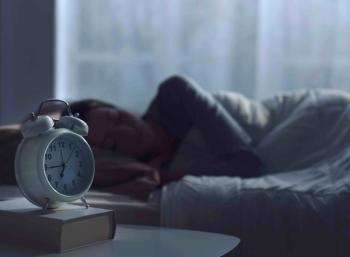
Simple Wellness Strategy Delivers Better Mental, Physical Health
A 30-day intervention that includes exercise, nutrition, mindfulness, social connectedness, and sleep resulted in improved scores across a series of wellbeing measures for a small group of patients.
What does “wellness” mean, and why does it matter? For mental health professionals who were likely trained to look for symptoms, make a diagnosis, and prescribe treatment with the goal of putting symptoms at bay—and keeping them away—the term offers patients a chance for something more, according Saundra Jain, MA, PsyD, LPC, an adjunct clinical affiliate at the University of Texas School of Nursing.
“Years ago, wellness was never mentioned,” said Jain, who gave Friday’s talk, “Mental Wellness Matters: Applying Wellness Interventions Even in the Busiest Clinical Practice,” during the US Psychiatric and Mental Health Congress, being in San Diego, California. Wellness, she said, conveys moving beyond an absence of disease to “the idea of flourishing.”
“Instead of just surviving, we want our patients to be thriving,” she said.
Wellness incorporates the idea of physical, mental, and social wellbeing, but it’s more than just “feeling better.” It’s working on strategies like mindfulness with the goal of better health outcomes that can be measured, and avoiding things like Alzheimer’s or metabolic syndrome. “We as doctors want that; we as people want that. Why wouldn’t patients want that?” Jain asked.
A psychotherapist in private practice, Jain and Rakesh Jain, MD, MPH, have developed WILD-5, (Wellness Intervention for Life’s Demands) a 30-day intervention that covers 5 elements: exercise, sleep, mindfulness, nutrition, and social connectedness. The components were developed to take aim at the top excuse today’s patients offer for why they don’t take better care of themselves: they don’t have time.
Elements of the intervention are:
Exercise: Patients are asked to walk 6 out of 7 days for 30 days.
Sleep: Patients are advised to avoid caffeine after noon, to stay on a consistent schedule, to avoid exercise right before bedtime, and to turn off all electronics an hour before bedtime. If patients can adopt just 1 of the strategies the clinicians expect to see some improvement.
Mindfulness: The Jains have a website with a free downloadable app for a 10-minute guided meditation. Patients are asked to do meditation every day.
Nutrition: A second app assists patients with keeping a log of all their meals, snacks, and alcohol consumption.
Social connectedness: Patients are asked to call or text a family member or friend every day on something not related to work.
Patients who think the intervention will be easy find out otherwise, Jain said. “It sounds simple, but it’s another thing to implement it and stick with it,” she said. Some did not understand the point of each element, but each one makes sense.
Improved mindfulness, she said, contributes to increased hippocampal volume and fitness and reduces the risk of developing dementia. Exercising 5 times a week reduces by a factor of more than 3.5 the likelihood of experiencing depression, in addition to physical health benefits.
Improved sleep is essential to avoiding metabolic problems, and the data on social connectedness show that it is, “healing, restorative, and helps us live longer,” Jain said.
All these elements can work with improved nutrition to fight obesity. Jain showed a slide of well-known data on the increase in adult obesity since the 1970s—only 15% of the population had a body mass index (BMI) of 30 or higher from 1976 to 1980; today that rate is 35%. With obesity comes a higher risk of depression and other health problems, Jain said.
Data from a small group of patients who completed the intervention (29) showed they had measurable improvement on several established scales of wellbeing:
· On the Patient Health Questionnaire (PHQ-9), patient scores fell from 8.9 to 5, which denotes improvement of 43%.
· On the General Anxiety Disorder (GAD-7) scale, scores fell from 7.9 to 4.3, which on this scale signals an improvement of 45%.
· On the World Health Organization (WHO-5) Wellness scale, scores increased 10.7 to 15.4, improving 44%.
· Patients also showed improvement on lesser known scales that measure social connectedness, emotional eating, mindful awareness, and sleep quality.
Jain was also pleased that when asked to give their own rating of how much their wellness improved in 30 days, the average was 37.2% on a 100% scale. That is excellent after only a month, she said.
She noted, with some amusement, that while patients found the exercise component to be the most helpful element, it had the worst adherence of all 5. It showed, Jain said, that even if patients don’t fully comply with a program, they get real and perceived benefits.
Newsletter
Stay ahead of policy, cost, and value—subscribe to AJMC for expert insights at the intersection of clinical care and health economics.







































